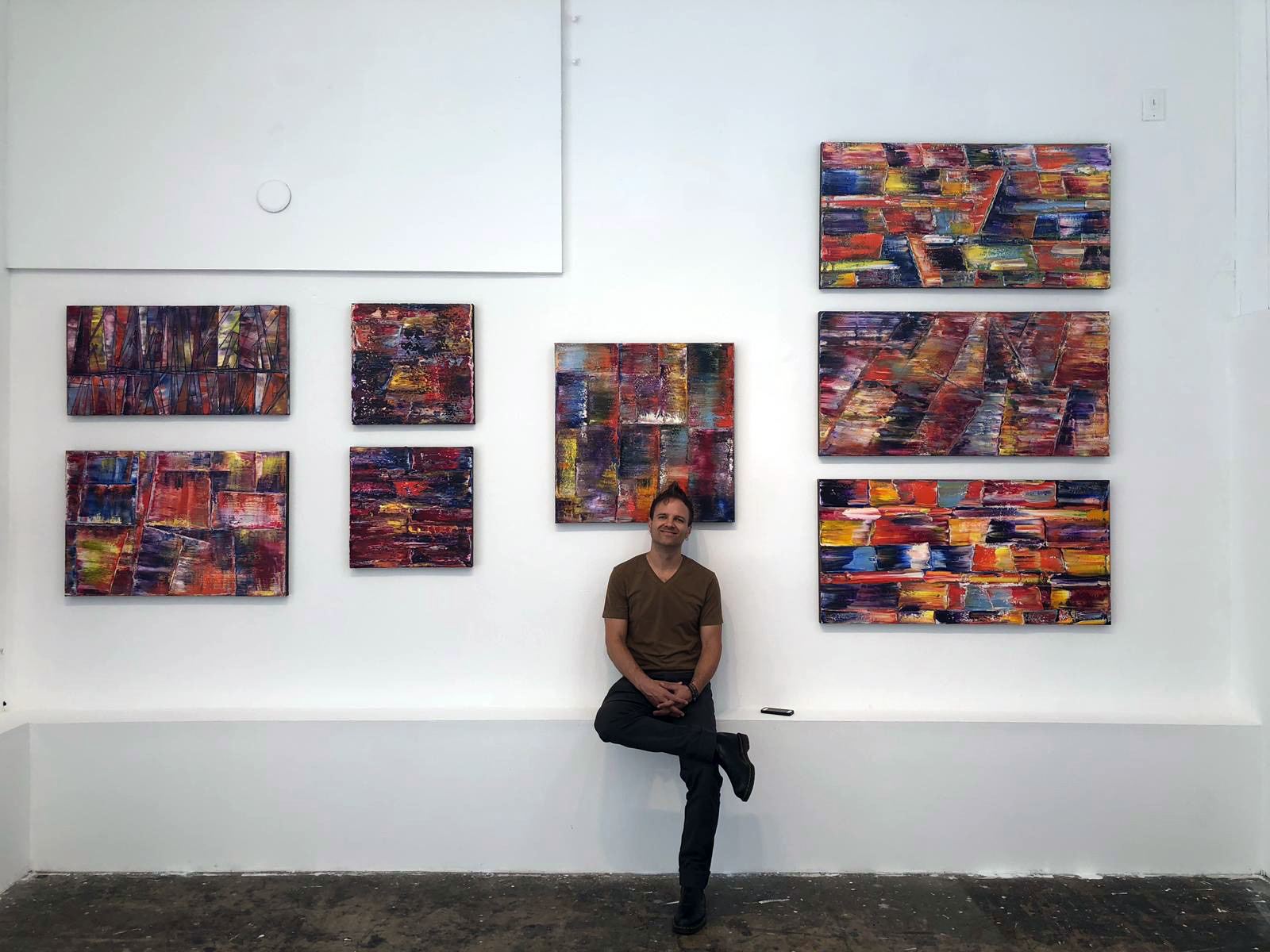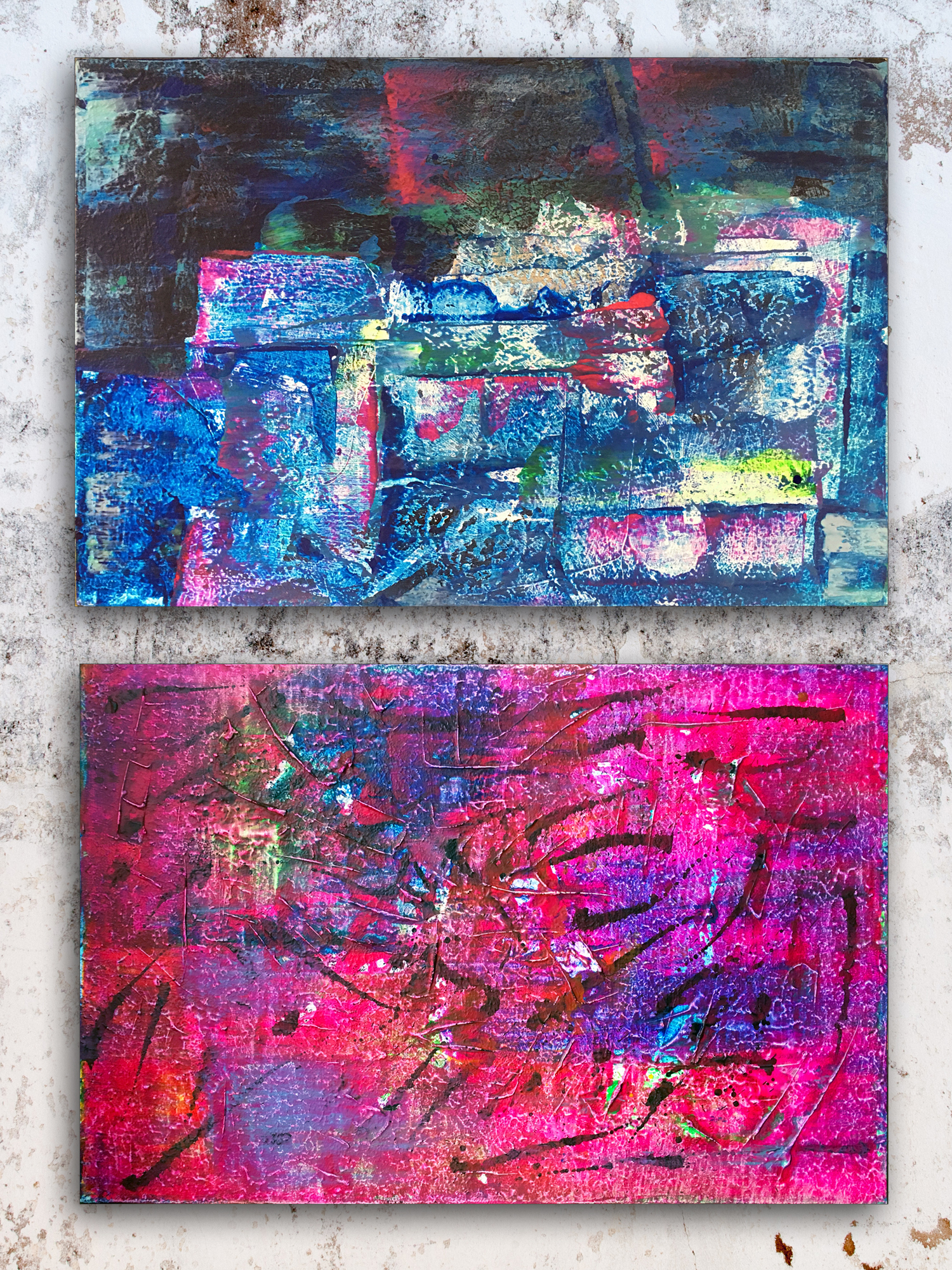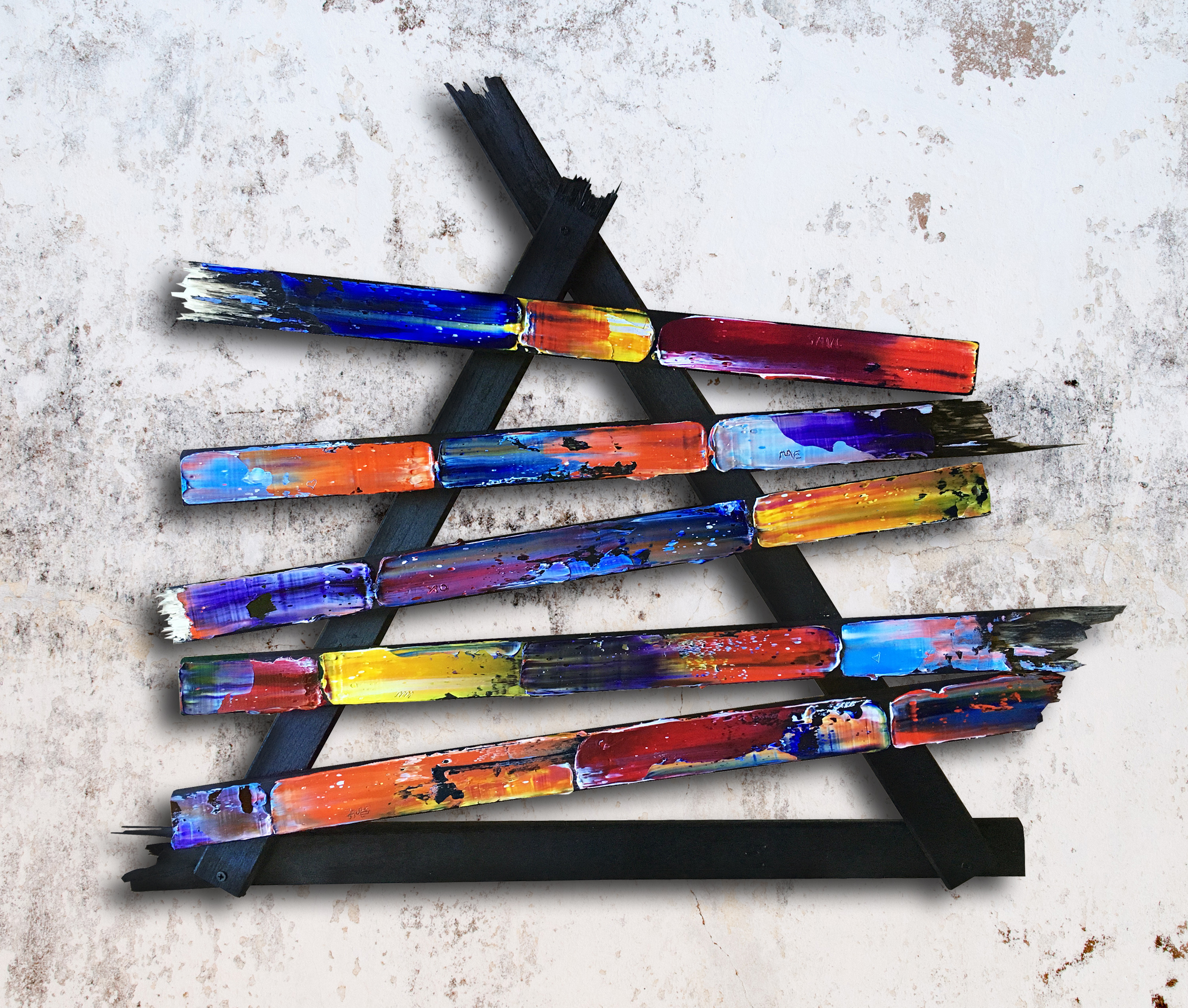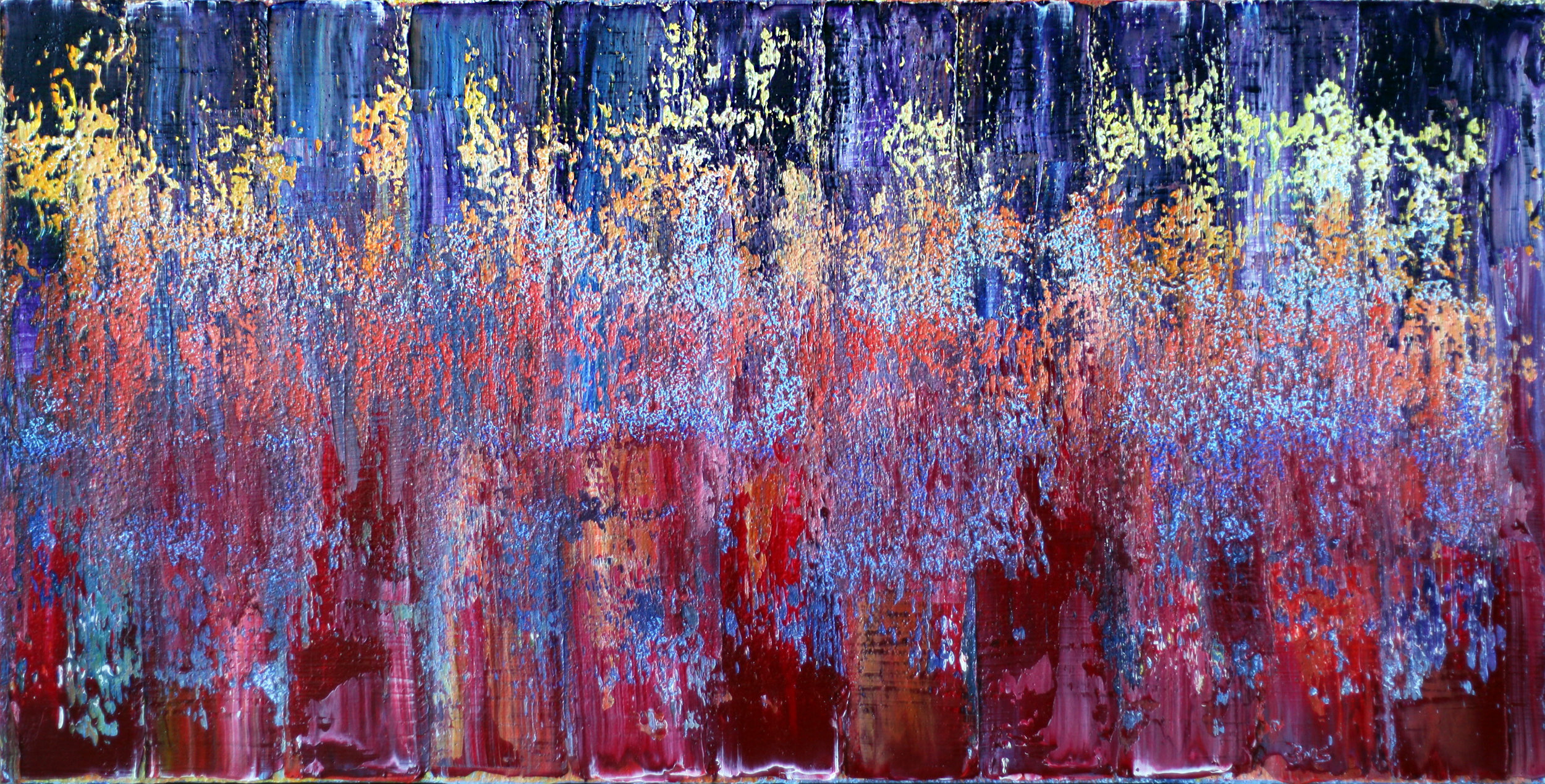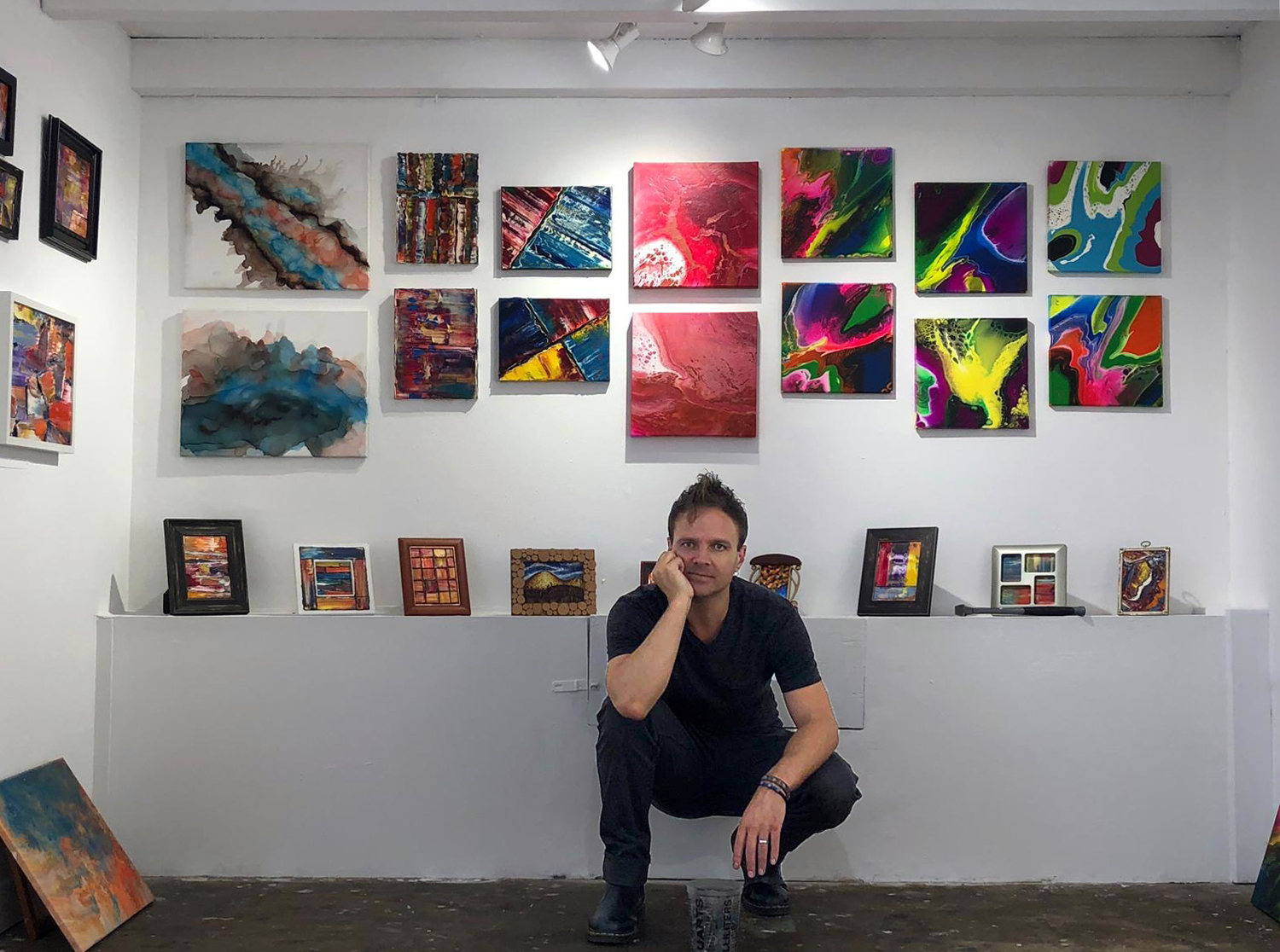Preston M. Smith: Playtime Is Over?
Abstract artist Preston M. Smith asks Playtime Is Over? in his upcoming solo show at ShockBoxx Gallery, opening this Saturday, May 18th from 7:00-9:00pm. After chatting with him, we can confidently say that the playfulness is nowhere near over. The LA-based artist will be displaying 92 (that’s ninety-two!) vividly colorful pieces that—unlike at most art exhibits—viewers can touch + interact with. The former musician turned painter + writer has an extensive body of work that exudes positivity—a major shift from the dark surrealism pieces he used to practice. We talked with Preston all about this collection, finding happiness + Modest Mouse.
Asymmetric Magazine: Congrats on your upcoming solo show—we’re so excited about it! Can you tell us all about it and the pieces we’ll see?
Preston M. Smith: Thanks! I’m really excited about it, too. I’ve been working with ShockBoxx for a little while, and this is my first solo show with them. It’s called Playtime Is Over?. I’ve always wanted people to touch my work and the texture of my art, so I want the show to be really playful and interactive. A lot of the work is actually split into sections in the gallery. I have a lot fun small micropaintings that are oil on glass with antique frames, and then I have fluid, cosmic acrylic pieces that are really bright with fluorescent colors. In the main room, I have some big oils and a few textured acrylics. The show also includes my new series, which is made up of assemblage pieces that are sculptural paintings of found objects and scavenged wood from around Los Angeles.
Playtime Is Over? installation view
AM: That sounds awesome! So, the viewers are allowed to touch the art?
PS: Yeah! Well, assuming they don’t have ice cream on their hands. It’s supposed to be tactile, so I want people to have a different experience. Most of the time when you go to a gallery or a museum, there’s a line you have to stand behind—literal or implied—and I always thought that was restrictive. I want people to be able to go up and enjoy the colors and textures in person.
AM: Is there a piece in the show that you’d say you resonate with most?
PS: There are a few. There’s one I love called Sound Wave and a sister piece to that called Rain Dance; those are two of my favorite oils. Also, I have a painting called This Painting Will Save Your Life that I love. There’s a block sculpture that will be displayed on a pedestal and is the only true sculpture in the show. It breaks the plan of canvas even more than the others, so it’s one of my favorites.
AM: We love that you source material for your sculptures from around LA. Other than that, do you think LA plays a role in your work and the themes you pursue through your art?
PS: Oh man, yeah—a huge role. I’ve been in LA since 2002, and I came here to be a painter and an actor. I very quickly hated the whole world around acting, and it was natural to fall into my painting. LA has influenced me so much. I had a huge love/hate relationship with the city in the beginning. I had some really dark times, I was drinking too much, and my work was very dark. My first ten years here were pop surrealism, and I did really personal, figurative-themed pieces. As I’ve transitioned into liking LA more, liking myself more, and becoming more positive, my work became abstract, textured, bright and lively. It’s just happier, and these pieces reflect my mood as I’ve changed through my personal experiences.
As I’ve transitioned into liking myself more and becoming more positive, my work became abstract, textured, bright and lively.
AM: What would you say you ultimately attribute your change to a happier, more positive outlook to?
PS: There are so many nuances and little gems that I learned along the way, but I will try to summarize. I was waiting tables for well over a decade so that I had time to create my art in my spare time. I believed that I just needed to stick it out and that someone would eventually ‘discover me’ and my talent. All the while, I was buying into the ‘starving/tortured artist’ stigma and allowing myself to indulge in this as I awaited my big break. With each year that passed, I became more unhappy and shameful that I still was not able to make a living doing art, and my belief in what society told me an artist was supposed to be was making me miserable. I was living in an existential crisis. Finally, I hit a wall in my early to mid-30s and couldn't sustain the lifestyle anymore, and a few things changed. First and foremost, I learned how to be kind to myself, which spills over into how you treat other people. I learned how to cut out negative self-talk, toxic people and ideas from my life. If you listen to all of the people who tell you how hard or impossible it is to make it as an artist, you will internalize it and eventually fulfill that prophecy. I also stopped putting bad things into my body. ‘You are what you eat’ is a very true expression. ‘You are what you believe’ is just as powerful—maybe more. So, I began cultivating some new and powerful beliefs. I also started to take responsibility for myself and career as an artist; I realized that nobody was going to do it for me. That only took me 15 years and countless shifts as a waiter to figure out, but I’m so grateful that I did. I also met my amazing wife, who is a constant source of positivity and support in my life. It's funny, the moment you start challenging and knocking down some old beliefs that no longer serve you, you begin to wonder what else is possible. For example, I thought I was a Figurative and Pop Surrealist artist and practiced that for over a decade, and all the while, my abstract side was pushing to get out. Becoming happier in life helped to facilitate and is an expression of that shift in my work. Now if I want to do something in my art, I just do it and don't overthink it. Who says I can't? The same people who say you can't make it as an artist? I don't even listen to those voices anymore. I just breathe, put on some music and keep making stuff.
AM: Aside from acting, you have a vast background in a lot of art forms: You were in a band, and you’re a writer, too. How has that shaped your visual work?
PS: It’s all wrapped up in what I do. I think sometimes people are only inspired by things within their own art form or genre. For me, I draw a lot of my inspiration for my paintings from music, writing and movies. I have a punk and ska background, and I used to be in a punk band. I was the lead singer and trumpet player—don’t ask me how that worked—and I wrote a lot of music. I don’t listen to as much punk and ska as I used to, but I’m still drawn to anything moody that gets me right into the feeling of painting. Music is a huge part of my process; I don’t paint without it. It feeds into my work and always becomes a part of the art. I can actually remember what I was listening to when I look at certain pieces.
AM: What musicians are you currently listening to?
PS: My greatest hits are Tom Waits—he’s so theatrical, and he always gets me in the mood to create art—and The Pogues. I’m really digging Interpol’s new album Marauder, and Modest Mouse has always been a big one. In college, I was at one of their first shows, and I like to watch them evolve. They’re one of those bands that paints a really good picture with their lyrics and music, and that’s something that feeds into my art a lot.
AM: We love Modest Mouse! We’re stoked on their new singles.
PS: I’ve been waiting for their new album for years. I loved their last album—it was great. I love their more experimental stuff, too. Isaac Brock has a way with lyrics that’s really interesting to me. Do you have an album of theirs that you really like?
AM: We grew up with the emo scene, so we love their older stuff, too. This Is a Long Drive for Someone with Nothing to Think About is a favorite.
PS: That’s awesome—I love that album. That’s so funny because I had a couple of bandmates who I was good friends with, and we thought of ourselves as emo people masquerading as punk and ska musicians.
AM: What was your punk/ska band?
PS: It was called Ten Minutes Down. It was an Andy Warhol reference to his quote, ‘In the future, everyone will be famous for 15 minutes’. So, the idea was, ‘ten minutes down, five to go’.
AM: Nice! We love a good Warhol reference. So, what’s next for you after the solo show?
PS: I’m always painting, and I have a couple of things up my sleeve. Next will be a couple of small group shows with ShockBoxx and BG Gallery. I’m actually looking to write a book for artists, too. I want to write about daily habits in an autobiographical way of how I pulled myself out of the darkness of all the tortured artists and that whole stigma. It will be about how I learned to be happy and able to create from that angle and not just from a place of darkness. I’ll keep you posted!
Playtime Is Over? is opening at Shockboxx Project in Hermosa Beach Saturday, May 18 7:00-9:00pm // more info
// photos courtesy of Preston M. Smith + Magdalena Mendez-Smith
// view more of Preston’s work at pmsartwork.com + Instagram.


